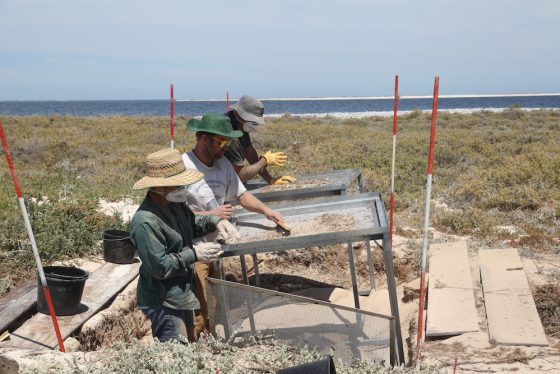17th century Dutch shipwreck gives up more of its secrets

The ill-fated Dutch ship Batavia which sank after striking a reef off the Western Australian coast in 1629 has given up more of its secrets.
An international team of archaeologists, including scientists from the University of Western Australia, the Western Australian Museum and the University of Amsterdam, has discovered a new communal grave in the Abrolhos Islands containing the bodies of five of the survivors.
‘These people probably died shortly after the shipwreck,’, archaeologist Liesbeth Smits told Trouw. ‘They died of hunger or from drinking salt water. We didn’t find any evidence of a violent death, which we saw on the remains we found earlier.’
The newly built VOC ship, on its way to Batavia, was doomed from the start. Commander Francois Pelsaert, a merchant but in charge of the ship, and his captain Adriaan Jakobsz did not see eye to eye and the latter conspired to hijack the ship which was laden with valuable merchandise and money.
Wrecked
But a navigational mistake put paid to his plan and the Batavia was wrecked in 1629 on the Morning Reef off the Western Australian coast. The 282 survivors ended up on a small coral island termed ‘Batavia’s Graveyard’ – Beacon Island. In the following months a mutiny unfolded, leading to the deaths of around 115 people, many of whom were murdered by the mutineers.
The communal grave was discovered earlier this month and was made up of five sets of human remains, along with various artefacts.
Now, Smits is going to try to find out where the five men came from. ‘We are going to look at the chemical composition of the enamel on their teeth. This is formed during the first years of life and doesn’t change with age. All sorts of chemicals from the environment of your birth end up in there, via food among other things. These chemical elements can tell us very accurately where these people grew up,’ she told Trouw.
International
The method was used on other remains as well and showed the VOC, which was the first multinational company in the world, was a truly international company with French and British crew members.
Jeremy Green, head of maritime archaeology at the Western Australian Museum, who has been investigating the Batavia and the story of its survivors since the wreck’s discovery more than 50 years ago, says the grave constitutes yet another piece of the ship’s tumultuous history.
‘This latest find adds significantly to the wealth of information we have on Batavia, and shows that there are still very important discoveries to be made about the remarkable human story behind one of Australia’s oldest known shipwrecks,’ he said.
Thank you for donating to DutchNews.nl.
We could not provide the Dutch News service, and keep it free of charge, without the generous support of our readers. Your donations allow us to report on issues you tell us matter, and provide you with a summary of the most important Dutch news each day.
Make a donation